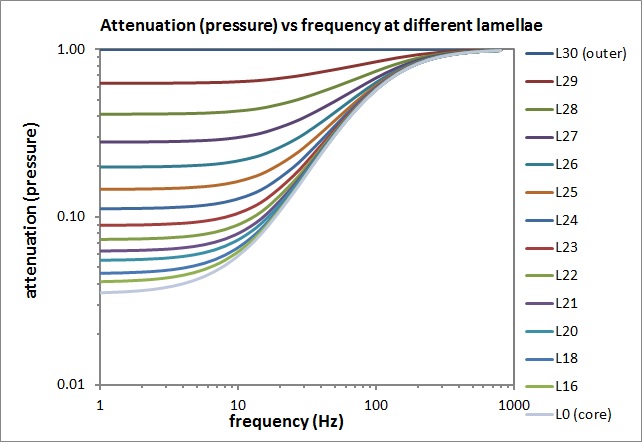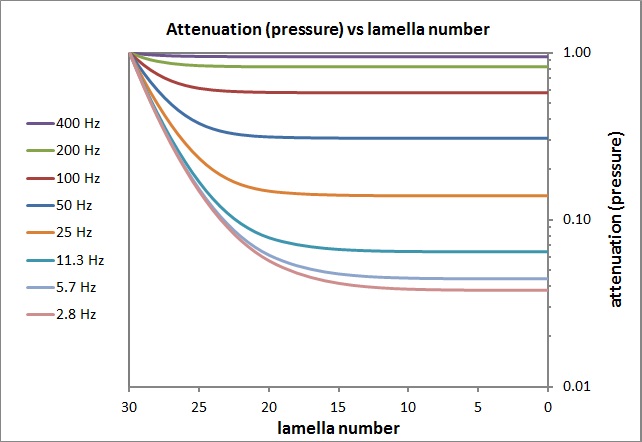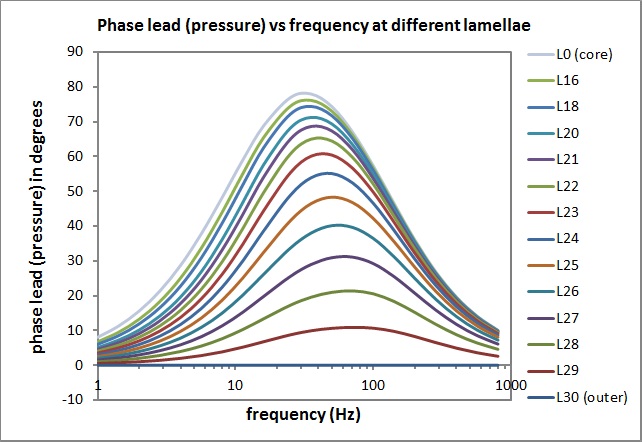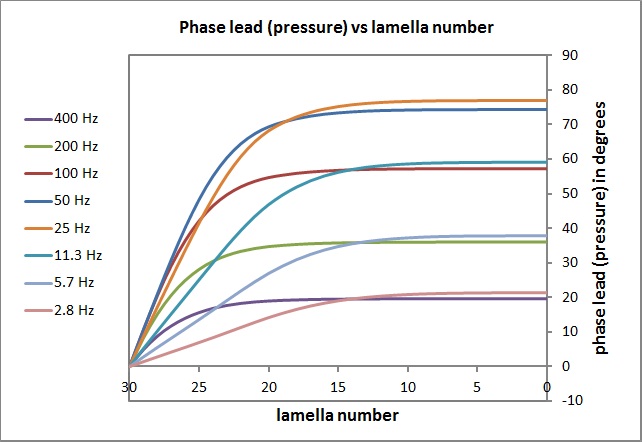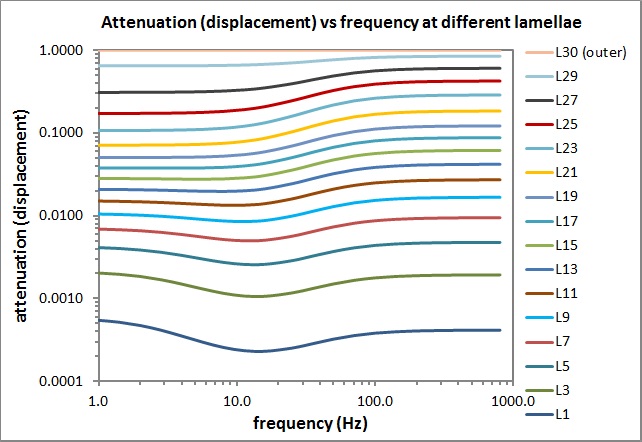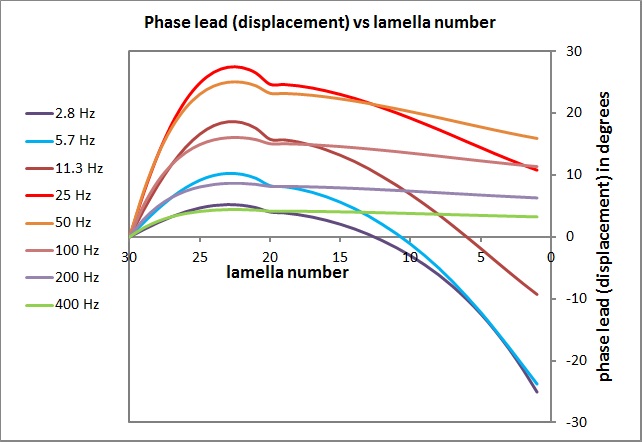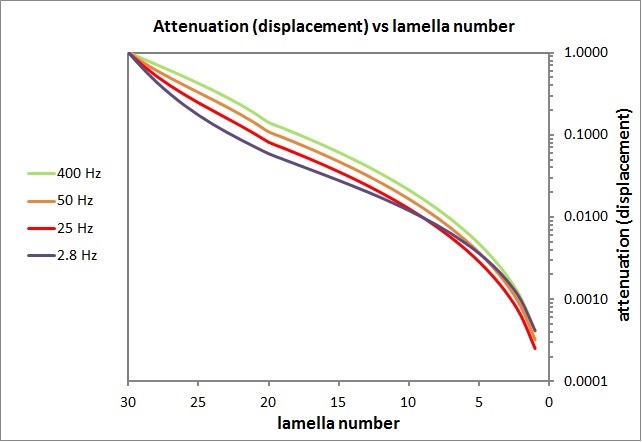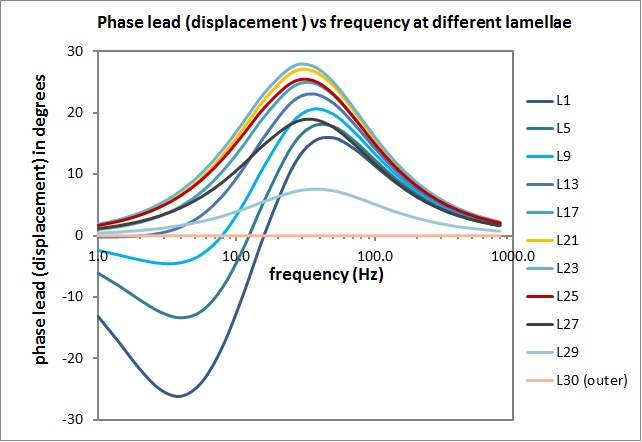Touch 2
INTRODUCTION
The pacinian corpuscle is one of several types of touch receptors in the skin. It has a layered structure rather like an onion and is typically around 0.5 mm in diameter. In their 1966 paper, Loewenstein and Skalak present a model of the corpuscle, consisting of 30 lamellae surrounding a rigid core; see:
W. R. Loewenstein and R. Skalak, Mechanical transmission in a Pacinian corpuscle, an analysis and a theory, Journal of Physiology, 182, 346–378, 1966.
Loewenstein and Skalak describe an electrical-network equivalent of their mechanical model and provide a limited set of results. With current technology it is much easier to perform such modelling, and this page presents a wide range of results from the electrical-network model. The model was implemented using the software package LTspiceIV; results were checked by comparison with a "real" model using analogue electronics. This research was carried out by Ian Summers and Lana Pitts-Yushchenko as part of a project supported by the Leverhulme Trust.
RESULTS
INTERPRETATION
The overall amplitude and phase responses of the network for pressure (traces labelled L0 in the panels at top left) show, respectively, a maximum slope of around 20 dB/decade and a maximum phase lead of around 75°. This is perhaps unexpected because the 30-stage network (each stage with two capacitors and one resistor) has the potential for much larger cut-off slopes and phase shifts. In fact, these amplitude and phase responses can be approximated using a single-stage network of the same type (with suitably chosen values for the three components), representing only a single lamella surrounding the core. This suggests that the function of the multi-lamella structure of the pacinian corpuscle is not to produce a particular transfer function between the surface and core of the corpuscle. It may be that the most important purpose of the corpuscle's structure is to increase the size of the receptor, providing a large volume and large surface area, and hence a mechanism to bring mechanical signals to the core from a large “catchment area” within the surrounding tissue.
An improved model which includes corrections for lamellar curvature is described in our 2018 paper Structure of the Pacinian Corpuscle: Insights Provided by Improved Mechanical Modeling (IEEE Transactions on Haptics, vol. 11, pp. 146-150). Results suggest that the outer-zone lamellae produce a focusing
effect whereby stimuli are channeled radially inwards. The requirements for this effect (large outer-surface area and thin, closely spaced lamellae) provide a
rationale for the complexity of the corpuscle's outer-zone structure.
